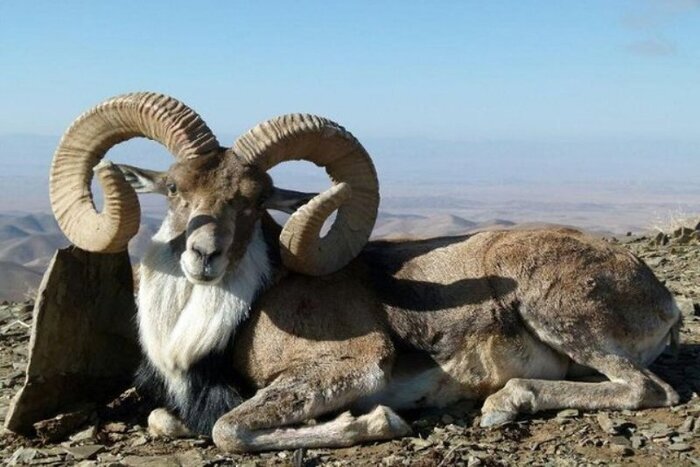South Khorasan hosting unique species of urial

TEHRAN – Darmian protected area in the eastern province of South Khorasan is a habitat for thousands of the largest and the most beautiful species of urial in Iran, which is even famous worldwide.
The urial (Ovis orientalis vignei), also known as the arkars or shapo, is a subspecies group of the wild sheep Ovis orientalis. Noticeable features are the reddish-brown long fur that fades during winter; males are characterized by a black ruff stretching from the neck to the chest and large horns.
The urial is found in western central Asia from northeastern Iran and western Kazakhstan to Pakistan's Balochistan and Chitral, and in Ladakh, India. To the east, it is replaced by the bigger argali and to the southwest by the Asiatic mouflon. Its habitat consists of grassy slopes below the timberline.
Darmian Protected Area, stretching to 84,039 hectares in the center of Darmian border city, shares a variety of environmental attractions and is renowned in the world for its unique species.
The urial in this protected area is slightly different from the urial in other parts of the country, which has made it attractive to tourists, environmentalists and even hunters, Hassan Akbari, director of the provincial department of environment (DOE) said.
Urials of the Darmian region are different due to sharing a border with Afghanistan and gene transfer so that their conservation value also increases, he added, noting, the male urial in this region is more beautiful, stronger, bigger, and smarter than other species of urial due to its larger horns and its special shape and long hair on its chest.
The hybrid urial is rare in the world, which is reproduced by Afghan urials and native urials, he highlighted, IRNA reported on Saturday.
“We plan to do genetic studies to determine exactly whether Darmian urial is different from other urials of the country, although the differences are now visible,” he stated.
Mohammad-Ali Khosravi, Darmian’s DOE chief, announced that the population of urial has increased in the region, according to the winter census this year (beginning on December 21, 2020), over a thousand urials have been identified in the protected area, which shows an increase of 30 percent compared to last year.
Appropriate rainfall over the past two years and the protection measures are among the reasons for the population growth of this valuable species, he concluded.
Urials added to UN global wildlife agreement
The Thirteenth Meeting of the Conference of the Parties to the Convention on the Conservation of Migratory Species of Wild Animals (CMS COP13) has approved Iran’s proposal to include urials in the United Nation's list of endangered animals.
The CMS COP13 was held February 15 – 22, 2020 in Gandhinagar, India, with resolutions and decisions adopted to help conserve migratory species globally.
The meeting approved a proposal submitted by Iran, Tajikistan, and Uzbekistan to include urials in the United Nation's list of top ten endangered animals for conservation. So that, they were listed as migratory species that would benefit from enhanced international cooperation and conservation actions.
The conservation status of the urial is threatened as their habitat is perfectly suitable for human development; however, the urial population has been recovering in recent years.
FB/MG
Leave a Comment